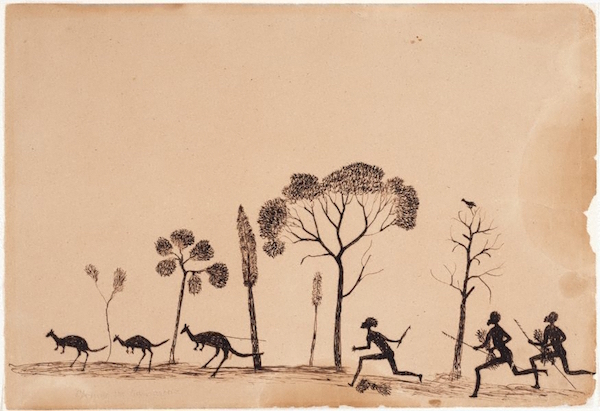5 QUESTIONS with Cara Pinchbeck

What is your role at the Art Gallery of New South Wales, and what is your background?
I am the curator of Aboriginal and Torres Strait Islander art at the Art Gallery of New South Wales. My family is Kamilaroi, from north-west NSW.
How can museum and gallery collections be shared with Indigenous communities, and how can communities have input into the way works are displayed?
I think institutions today have a responsibility to make collections accessible. Institutions are only the caretakers of the collections they hold. Cultural responsibility for the works remains with the artist or the community they are from, and I think it is important that we work together to care for collections and determine how they are presented to the public, from the display of the works through to any accompanying materials or programs.
At the Gallery, we have a policy of working with the relevant artist or community in the development of any exhibition or programs and are committed to making these truly collaborative. For example, the upcoming exhibition, Art from Milingimbi: taking memories back, began its life three years ago when I travelled to Milingimbi to start to show people the collection we hold, and began to talk to the families of the artists and the wider community about the potential to do an exhibition. These discussions have continued over subsequent trips and have greatly informed and shaped the exhibition that will open in November. In sharing the collection with the community through images and the details held on each work and when they were collected, family members and cultural leaders have been able to provide extensive additional details about the works and the artists who made them. In giving the collection back to the community, so to speak, they have given the Gallery extensive information on the works held in the collection. It is definitely reciprocal, and importantly this ensures that the exhibition the Gallery presents is in line with the community’s wishes and respects their cultural inheritance.
While it is important for me that the exhibition works curatorially, it is also important that it meets any cultural requirements. In my last trip to Milingimbi, I was able to provide a draft of the catalogue and exhibition layout and sit down with people to make any necessary changes to ensure that it does both.
Cara Pinchbeck presenting ‘Remaining relevant: the changing roles of collections’ at Kaldor Public Art Projects’ Spot Fire Symposium 2: Spectacle, manifestation, performance at the Art Gallery of NSW. Watch the full presentation
What are the responsibilities of institutions like the Art Gallery to facilitate this access?
Institutions have a responsibility to undertake meaningful consultation and to develop collaborative working partnerships. For too long Indigenous artists and work have been spoken about and for, and now it is time for agency to be returned to Indigenous people, and to the people most closely connected to the works held in collections. Institutions need to be open to requests from community to access collections, whether this be merely providing images of works or a more involved project, as I have outlined in regard to Milingimbi. Those of us working at institutions also need to make sure that we make the institution a friendly environment, where people feel welcome and where their expertise and knowledge is appreciated and valued.
Jonathan Jones recently curated the exhibition Murruwaygu: following in the footsteps of our ancestors at the Art Gallery. What was his role as a guest Indigenous curator working with objects that are not part of the Gallery collection?
Yes, Murruwaygu was a groundbreaking exhibition curated by Jonathan and drawn largely from other institutional collections. Jonathan has done an amazing amount of research into this material and pulled this together into a fantastic exhibition by working closely with his curatorial advisory group and by developing enthusiastic support for the exhibition from the community and from the institutions whose works were lent. This ensured the Gallery was able to borrow the majority of works Jonathan had requested and allow his unique vision to be realised.
The Garden Palace fire saw the loss of a large collection of Indigenous objects. What impact do you think this had on the Art Gallery of New South Wales and its ability to collect Indigenous art?
The fire at the Garden Palace really led in many ways to the development of the Gallery, although not immediately to the collecting of Indigenous art. Not having a collection of Indigenous objects from the time of the Garden Palace allowed the Gallery to present Indigenous objects as art, rather than as material culture, when the Gallery did start collecting in the 1950s.This was a dramatic shift at the time and may not have been so marked if the Gallery had held earlier material.
